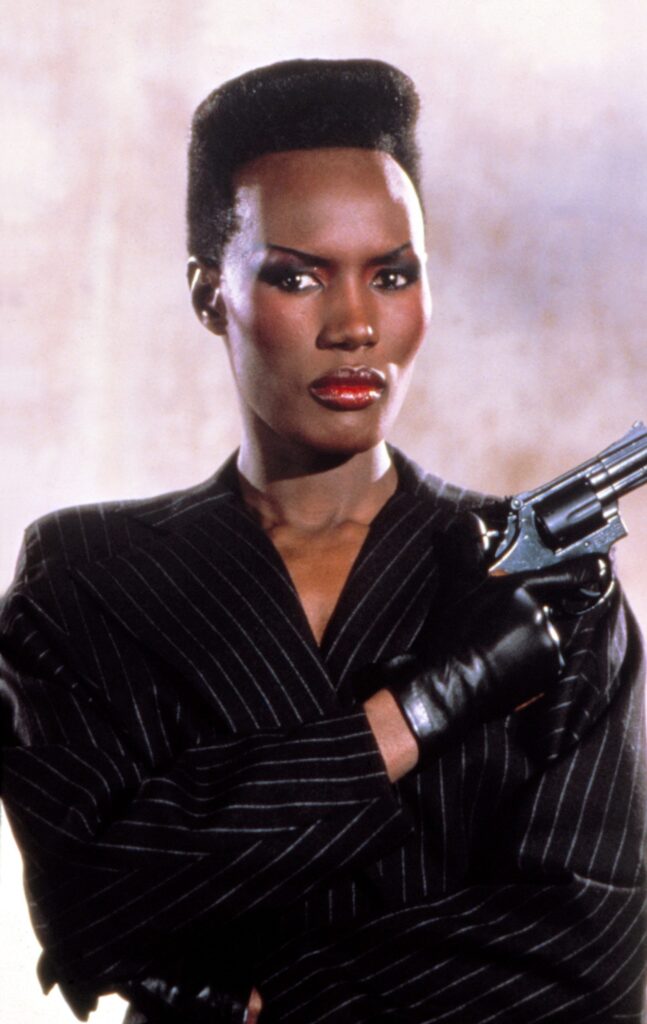
A few weeks ago, when I was doing my first DJ shift for the Spring semester, I got a call on the hotline requesting I play a song by Grace Jones. I didn’t recognize the name, but never one to turn down a request, I pulled up a song called “Pull up to the Bumper,” and hit play. What came out of the speakers stumped me for categorization. It was clearly dance music, but there was an edge to the guitars that reminded me more of punk, and it was capped off with just an instantly recognizable vocal performance. What I didn’t know then was that I was about to be pulled into a crazy world of one of the iconic divas of the era.
Grace Jones started out as a fashion model and got her break as a disco singer in the 70s. She only achieved minor success, and while dance music seemed like a safe investment in 1977, the anti-disco backlash would take out her hopes of being the next Donna Summers. She, and a whole lot of artists like her, needed to find a new career, and fast. Jones would find her route in one of the strangest career moves possible… she went punk. Now I don’t mean this to sound like Jones took a turn towards the Dead Kennedys, in fact, her music remained fairly danceable. The correct term for it sonically is probably New Wave, but her music adopted a rebellious and challenging air that sets her apart from the likes of Duran Duran or even Blondie. Always gender-bending in her fashion career, Jones became outright androgynous, trending towards masculine both in her appearance and her vocals. She also blended in more influence from her home country of Jamaica, working with the then-obscure Reggae duo Sly and Robbie.
Her 1980 album Warm Leatherette consists entirely of covers, but they’re drawn from such a variety of artists and so warped that despite knowing several of the songs, I initially assumed they were written for Jones. She covers Smokey Robinson, Tom Petty, and industrial synthpunk act The Normal, a collection of artists so unlike each other they might as well be drawn randomly out of a hat. Despite this eclectic taste, the album is extremely coherent, brought together by the sheer tour de force that is Jones’ vocal style. Later albums would see her move back into dance music and incorporate more elements from her home country of Jamaica. But she would never lose the weird edge that makes her such a unique musician.
What surprised me the most about Jones’ life, more than her music, her appearance, anything, was how successful she was at the time. While she wasn’t quite a household name, she had several hit songs, and such an alien woman would have certainly made an impression on the public. So why isn’t Jones a better-remembered singer? While she’s hardly obscure, there aren’t nearly as many articles about her as I expected, and I’ve never seen a music critic or magazine reference her in regard to the myriad artists that take inspiration, knowingly or otherwise, from her aesthetic.
Part of this is a general bias against artists who don’t fit a movement or genre well. While everyone knows artists like David Bowie or Blondie, genre-blurring artists without a massive catalog of hits can get short shrift in a music press obsessed with microgenres and local music scenes. Her race is probably also a factor. White America was extremely hostile to black music in the time between disco and Prince, and punk rock is one of the whitest genres around. But regardless of the reason her notoriety has faded, I hope you will take time out of your day to check out this early goddess of dance-punk.
